The music industry has undergone a radical transformation over the past decade, with new revenue streams gaining prominence while traditional ones decline. Streaming services and social media now dominate, while physical sales contribute only a small fraction to musicians’ earnings.
This shift has introduced significant challenges for artists, particularly independent musicians. Contrary to popular belief, independent artists and labels account for around 43% of total music revenues. With new platforms constantly emerging and audiences becoming increasingly fragmented, tracking income and royalty payments has become more complex. Additionally, the rise of AI adds further complications, as grey areas in copyright law often work against artists’ interests.
In this article, we explore the evolving landscape of royalty reporting in the music business and examine innovative royalty solutions that can simplify royalty statements and make record labels’ financial processes more efficient for all parties involved.
Music royalties today – who gets paid, for what, and how is it measured?
In the past, dealing with royalties was relatively simple—you had mechanical and performance royalties. The album would be sold, and the income would be shared between the songwriter, label, and distributor, depending on the agreement.
Streaming has changed the rules of the game. It has added more complexity to royalty management and reduced the share for artists and labels, with platforms taking a large commission from every stream. Moreover, artists have no choice but to adhere to platform policies because that’s where the audiences are—but those policies favor the biggest players, leaving everyone else at a disadvantage.
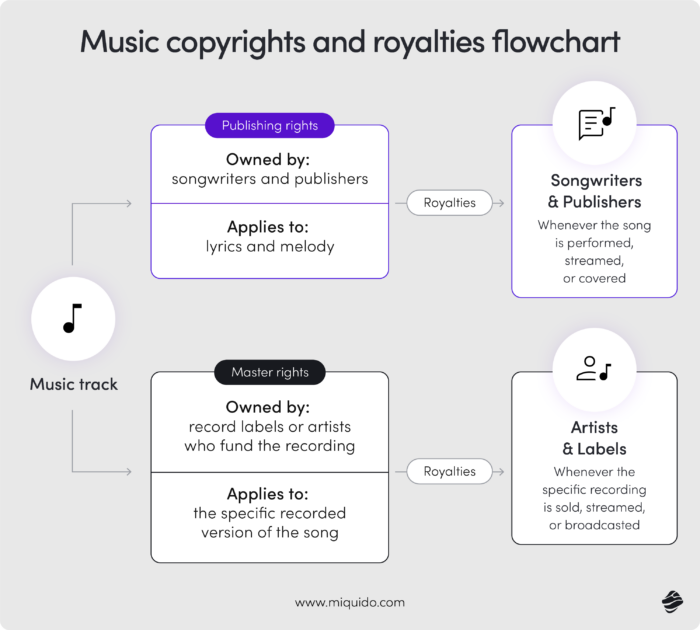
When the song is streamed, the artists is entitled to both performance and mechanical royalties, since streaming triggers two scenarios at the same time. Performance royalties are tied to the digital performance of the song, and the mechanical ones to the digital reproduction of work embodied in the audio file.
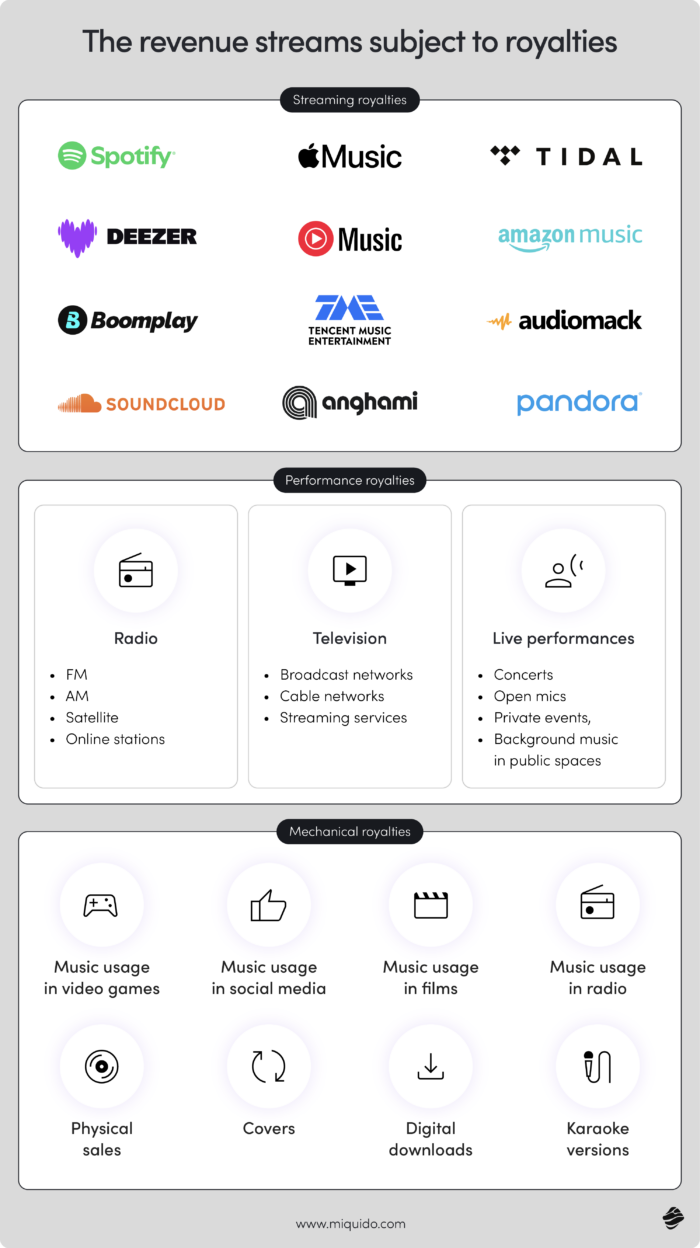
The impact of streaming on royalties management and payouts
Before streaming, artists earned money through album sales, digital downloads, and radio play, each with clearer revenue streams. With streaming, income is now based on fractions of a cent per play. Instead of a lump sum from an album purchase, artists rely on millions of streams to earn a living.
Just look at the numbers: A $10 album sale once paid the artist directly. Now, it might take 5,000+ streams to make the same amount.
The average per-stream payout on major platforms is $0.003 to $0.005. That means:
- 1M streams = $3,000–$5,000 (before label cuts & taxes)
- An indie artist needs 200K–500K streams per month to make minimum wage
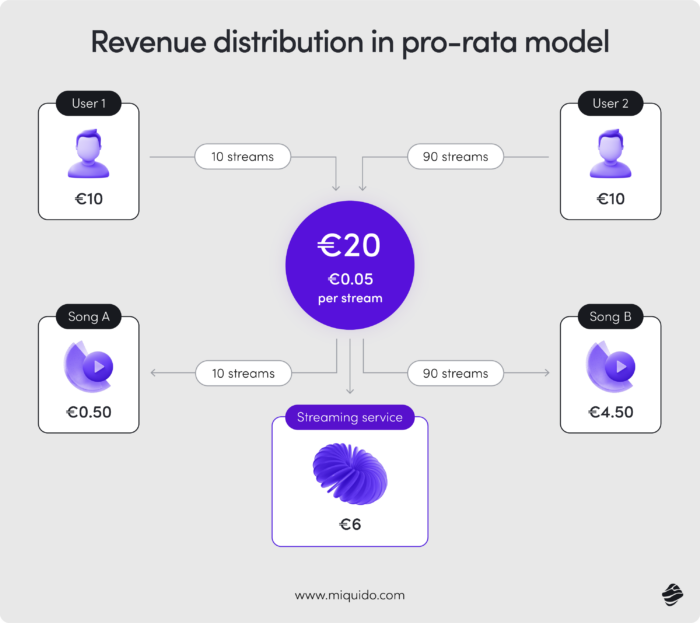
For most artists, this is unrealistic. Instead, they must rely on merch, live shows, and licensing deals to survive. On top of that, most streaming platforms use a pro-rata model, meaning revenue is pooled and divided based on total streams.
This benefits superstar artists but leaves smaller musicians with tiny earnings—even if their listeners are loyal. You may be listening to hundreds of niche artists, but the large chunk of your subscription will still land in big players’ pocket.
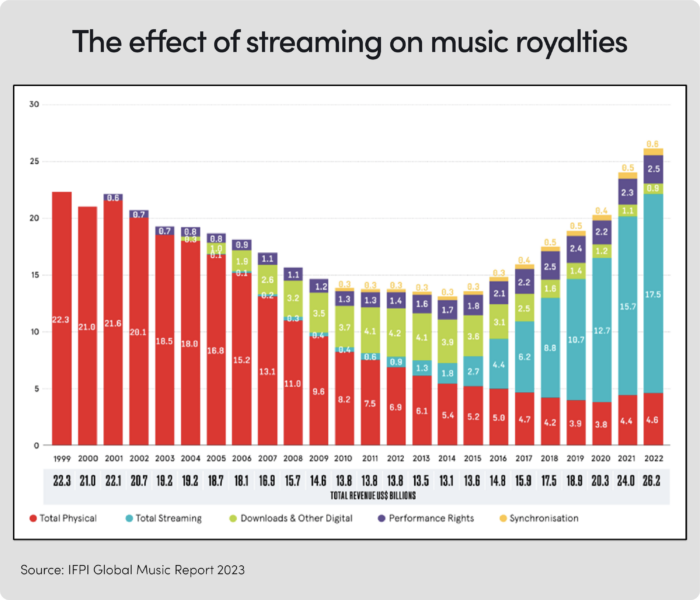
The model of revenue that streaming enforced has also made it harder to control and collect royalties.
Current challenges in music royalty management
Streaming is just a drop in a bucket of revenue management issues. Managing music royalties today is like trying to catch rain with a sieve—there are too many leaks, and artists often don’t get what they’re owed. Let’s break down the biggest challenges.
Too many platforms, too many leaks
Music is played, streamed, remixed, sampled, and covered across countless platforms. Tracking every instance and collecting revenue from all of them/ is a logistical nightmare. Many artists lose money simply because they don’t know where their music is being used. And it is crucial to be capable to measure it precisely, especially in the social media music era, where the song can have its revival from day to night and turn viral.
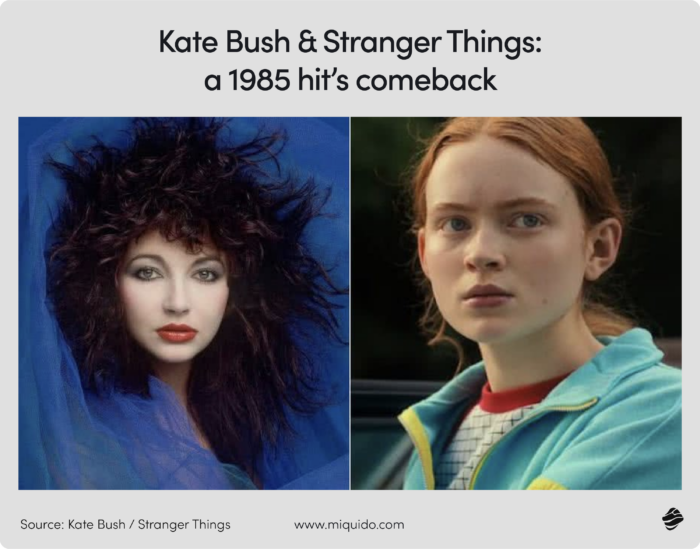
A blurry financial picture
With so many income streams, musicians struggle to see the full picture of their earnings. Inconsistencies in payouts go unnoticed, and opportunities for revenue growth slip through the cracks. Without a centralized system, it’s like trying to balance a checkbook with missing pages.
Different rules, different payouts
The complexities of the copyrights and royalties affect the payouts in often unobvious ways. Managing all these aspects without a dedicated team is overwhelming. The table below highlights key differences:
| Aspect | Samples (Using part of a song) | Covers (Re-recording a song) | Remixes (Altering a recording) |
|---|---|---|---|
| Permission needed? | Yes, from both label & publisher | No, but must pay royalties | Yes, from label (sometimes publisher) |
| Who earns royalties? | Original artist (master owner), Original songwriter & publisher | Original songwriter & publisher | Original artist (master owner), Remixer (sometimes) |
| Who pays royalties? | New artist pays for sample license & shares royalties | Cover artist pays mechanical royalties | Label may pay remixer a fee or split royalties |
| Income for new artist? | Limited (must share revenue) | Earns from recording sales, but not song royalties | Usually paid a fee, sometimes earns royalties |
| Main income sources | Streaming & sales (split with original artist), Performance royalties, One-time sample license fee | Recording sales (cover artist keeps), Performance royalties, Mechanical royalties (paid to original songwriter) | Streaming & sales (if credited), Performance royalties, One-time remix fee (if negotiated) |
| Common issues | Copyright infringement if sample isn’t cleared | Can’t change lyrics/melody | Remixer may not own rights |
Delayed payouts and red tape
Most PROs don’t pay artists instantly. Some only pay out quarterly, meaning an emerging artist might wait months to receive what they earned. Registering songs across multiple PROs is time-consuming, adding more weight to an already full workload.
Venues also struggle with rising PRO fees. Many small venues simply can’t afford to host live music anymore, reducing gig opportunities for independent musicians.
Missing streaming royalties
Streaming royalty payments are complex, and in some cases, distributors fail to allocate songwriter royalties correctly. This means some artists don’t get paid at all. As Dae Bogan, Head of Third-Party Partnerships at MLC, puts it:
“If distributors haven’t figured out a process—and I’m aware that there are some unnamed distributors who have not figured out a process to allocate and pay those royalties to songwriters, because they’re not dealing with songwriters—they sit on the royalties.”
The AI copyright wild west
The rise of Generative AI (GenAI) has thrown the industry into chaos. AI models have been trained on music catalogs without artists’ consent, and musicians don’t get compensated when AI-generated songs mimic their style.
Right now, someone can ask an AI to create a song “in the style of Doja Cat,” and that track can be streamed, used, and monetized—without a single cent going to the original artist.
New laws and technologies are needed to track how AI uses copyrighted music. Until then, artists continue to push for awareness and fair treatment.
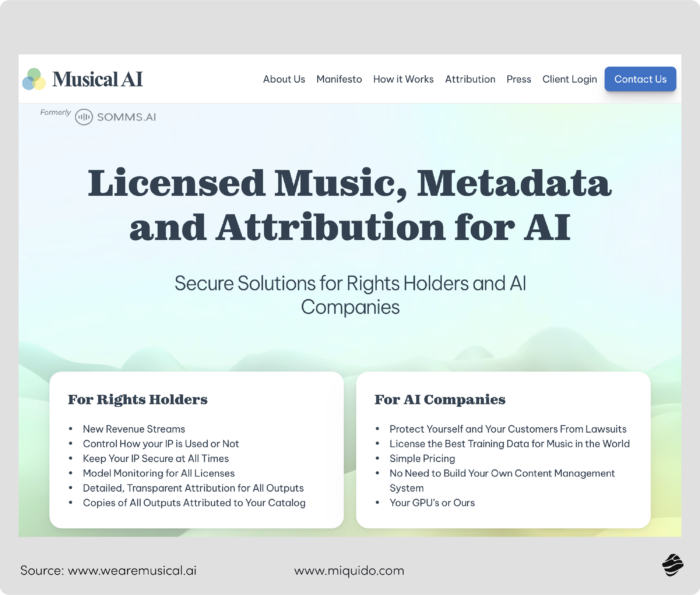
The role of licensing in music royalties
Licensing acts as the “traffic controller” of the music industry, ensuring that money flows correctly to rights holders when their music is used. Without proper licensing, royalties would be chaotic—just like a city without traffic lights, where cars (songs) move unpredictably, causing confusion and crashes (missing payments).
Imagine a filmmaker wants to use a song in their movie. To do this legally and ensure artists are paid, they need a sync license from the song’s publisher and, if using the original recording, a master license from the record label.
How licensing makes royalty management smooth:
- The filmmaker licenses the song by paying a sync fee to the publisher.
- The movie is released, and every time it’s shown on TV, PROs collect performance royalties and distribute them to songwriters.
- If the movie is streamed on Netflix, mechanical royalties might also be generated.
How technology is changing music royalties?
Till this day, royalty collection depends on intermediaries, often making the process slow and error-prone. Performance royalties flow through PROs (Performing Rights Organizations), while mechanical royalties are handled by the MLC (Mechanical Licensing Collective). Unless an artist has a direct license with a digital service, they rarely see fast payouts.
Tracking technologies help collect royalties, but the process remains complex. Streaming platforms provide usage logs, while venues, festivals, and commercial entities report setlists for live performances. This data then moves between multiple organizations, increasing the risk of delays and mistakes. In an evolving music industry, artists need accurate royalty payments to sustain their careers.
New technology could change this. Comprehensive royalty processing systems can cut out inefficiencies, offering transparent royalty statements and faster payouts. By reducing reliance on outdated tracking methods, artists, songwriters, and rights holders could finally receive what they’re owed—without waiting months or losing revenue to errors.
Blockchain for transparent royalty payments
Whether they would still involve PROs or constitute new models of royalty management that stem directly from artists or their labels, the tracked usage of the song could automatically trigger the royalty calculation and payment.
What usually delays the royalty payouts is the verification, intermediary distribution and payments. With blockchain and its smart contracts, this issue dissapears, automating the whole process. Not only does it speed up the payouts, but also reduces the probablility of errors.
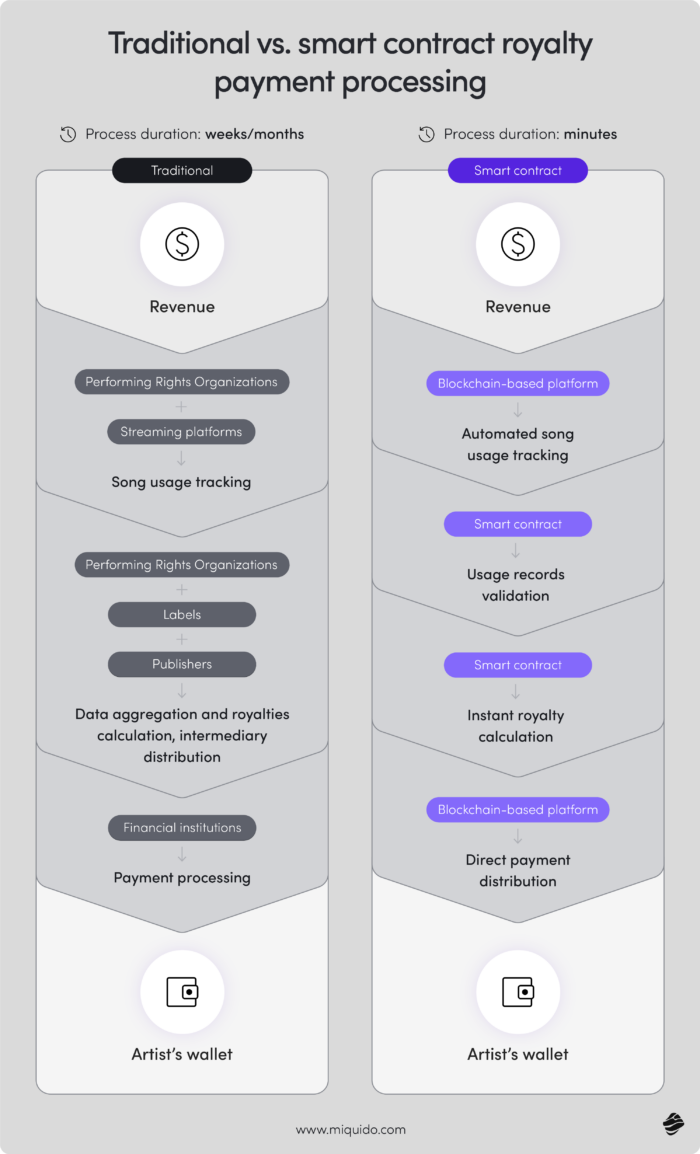
AI for managing royalties
AI can be pivotal for artists in gaining visibility into their revenue streams. By integrating data from multiple sources—streaming services, live performances, digital downloads, and licensing agreements—artists can track exactly where their earnings come from and spot potential gaps in payments.
Modern AI-powered platforms automatically pull data from streaming platforms like Spotify, Apple Music, and YouTube, collecting detailed information about play counts, geographic listener distribution, and payout structures. Simultaneously, AI can sync data from ticketing platforms, merchandise sales, and sync licensing deals, ensuring a holistic view of an artist’s revenue. Through API connections and machine learning algorithms, these tools detect discrepancies in payments, flagging missing royalties or underreported streams.
With so many revenue streams, clear insights are essential—it’s easy to get lost in raw numbers and overlook critical financial trends. GenAI enhances data processing by grouping and visualizing revenue sources, allowing artists to see which platforms generate the most income, which regions their most loyal fans come from, and how different channels compare in profitability.
This transparency helps musicians make informed decisions, whether it’s negotiating better deals, optimizing promotional strategies, or prioritizing specific revenue channels.
Predictive analytics for forecasting royalty earnings
For many musicians, financial instability is a major challenge. Building a career involves heavy investments in touring, promotion, and team salaries, and with income fluctuating throughout the year, cash flow can be unpredictable. Today, more artists handle these financial aspects independently rather than relying on a publishing company, which increases the risk of financial strain during slow periods.
Predictive analytics helps mitigate these uncertainties by analyzing past earnings, market trends, and streaming behaviors to generate accurate revenue forecasts. For example, if an independent artist releases a song in January and notices that their earnings from previous releases spiked two months later due to playlist placements and algorithmic recommendations, they can anticipate a similar pattern and plan their spending accordingly. Or, given the typical revenue dip and the streaming numbers rise after a finished tour, they can plan a strategy that helps to sustain income during the slower months.
The rise of direct-to-fan platforms – an answer to streaming struggles?
Direct-to-fan platforms are not a new invention—some of the biggest ones have grown alongside streaming services. Take Bandcamp, for example, the first platform that comes to mind when discussing direct-to-fan revenue models—it launched in the same year as Spotify.
Since then, these two platforms have taken very different paths. Spotify has expanded at a rapid pace, reaching over 200 million users and 66 million subscribers by 2024. Bandcamp, while not experiencing the same explosive growth, has steadily built a loyal community, continuously adding new demand-driven features, such as a ticketed live-streaming service.
As a direct-to-fan platform, Bandcamp operates with transparent royalty accounting—82% of revenue goes directly to artists and their labels (if they have one), while the remaining 18% covers transaction fees and the platform’s share. Payments typically reach artists within 24 to 48 hours, without the delays often seen in traditional music publishing and streaming models.
Let’s compare the numbers: an artist needs to sell approximately 366 albums at $10 each on Bandcamp to earn $3,000. On Spotify, they would earn an equal sum with 1 million streams, given the current payout rate.
The main challenge? Fans are deeply attached to the subscription model and reluctant to pay separately for albums or songs. They also expect more than just access to tracks—they want a seamless, all-in-one music experience with personalized recommendations, curated playlists, exclusive content, and more.
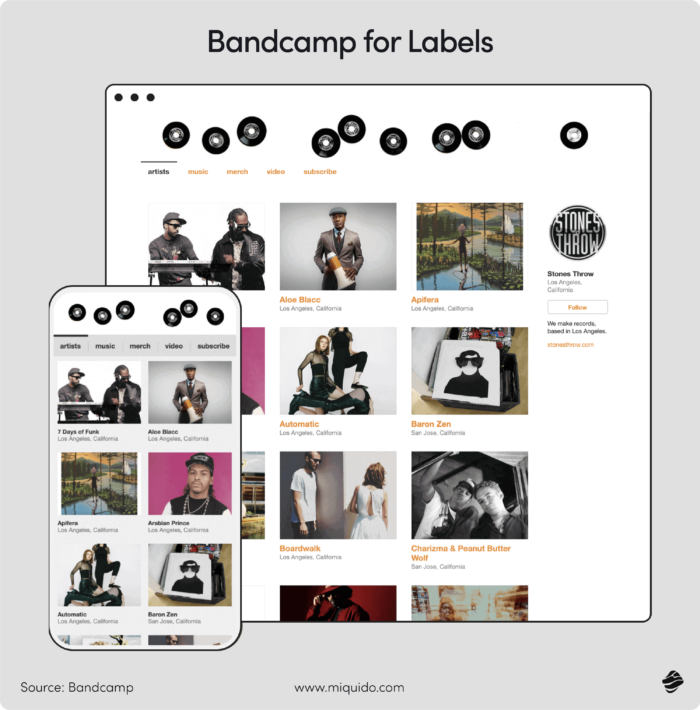
Direct-to-fan platforms of the future
To overcome these obstacles, new hybrid platforms could emerge, blending direct-to-fan support with the convenience of streaming. Imagine a model where fans pay a low-cost subscription, but a significant portion of their fee goes directly to the artists they engage with the most.
Alternatively, platforms could integrate publishing royalties and offer tiered membership options, granting access to exclusive releases, behind-the-scenes content, and community interactions, all while ensuring transparent royalty accounting.
By combining direct support with the ease of streaming, these alternatives could create a fairer, more artist-friendly music ecosystem—one that rewards creativity while giving fans the seamless experience they crave. Including embeded finance and fintech in music industry, they could eliminate barriers that often keep users away from more participative models.
How to prepare for the future?
The future is automated—both for artists and audiences. Musicians will likely be both challenged and empowered by AI—on one hand, fighting copyright infringement and lobbying for new GenAI laws; on the other, leveraging artificial intelligence to gain insights and take better control of their royalties and finances.
We should also consider that AI’s predictive capabilities in the music industry are reaching their peak. As of 2024, AI has been able to predict future hits with 97% accuracy. Music publishers can use this to increase revenue, but that’s not the only advantage. AI’s ability to forecast a song’s success and viral potential could also be harnessed to drive fan engagement.
Whether we adopt blockchain solutions or other technological innovations, one thing is certain: artists are growing increasingly frustrated with the challenges posed by streaming platforms, while fans are becoming more aware of the revenue models of streaming giants. The coming years may bring a shift in music app monetization strategies, with new, more direct and engagement-driven platforms gaining traction and a more participative and seamless royalty system forming.
As an experienced music application development company, we often write about technology advancements and trends in music, from Generative AI in music industry to top music events. Follow us for me valuable insights!

![[header] the future of music royalty management min](https://www.miquido.com/wp-content/uploads/2025/03/header-the-future-of-music-royalty-management-min.jpg)


![[header] the future of music royalty management min](https://www.miquido.com/wp-content/uploads/2025/03/header-the-future-of-music-royalty-management-min-432x288.jpg)
![[header] top music industry events & conferences to attend in 2025](https://www.miquido.com/wp-content/uploads/2025/03/header-top-music-industry-events-conferences-to-attend-in-2025-432x288.jpg)
![[headers] top 6 music software development companies](https://www.miquido.com/wp-content/uploads/2025/03/headers-top-6-music-software-development-companies-432x288.jpg)